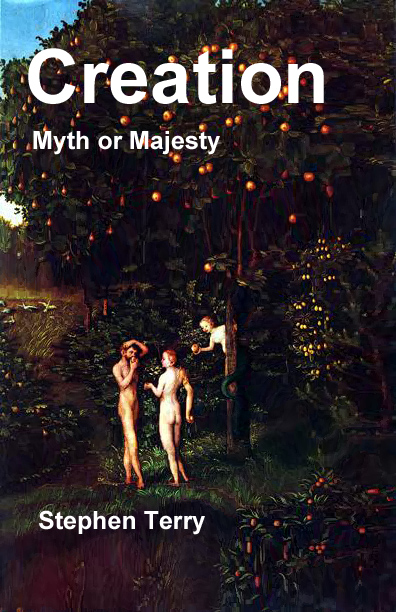
Stephen
Terry, Director

From the Stormy Sea to the Clouds of Heaven
Commentary
for the February 22, 2020 Sabbath School Lesson
 "In
the first year of Belshazzar king of Babylon, Daniel had a dream, and
visions passed through his mind as he was lying in bed. He
wrote down the substance of his dream." Daniel
7:1, NIV
"In
the first year of Belshazzar king of Babylon, Daniel had a dream, and
visions passed through his mind as he was lying in bed. He
wrote down the substance of his dream." Daniel
7:1, NIV
For
the first six chapters, Daniel has been written more or less in chronological
sequence. Now we see an abrupt change. Chapter 6 was about events under the
reign of Darius I after the conquest of Babylon. But Chapter 7 is apparently
dated to a time before the Persian threat, in the first year of Belshazzar's
reign. That in itself is problematic for is that dated concurrently with Nabonidus's
first year of 556 BC, or does it date from the period he was reigning at the request
of Nabonidus, perhaps allowing Nabonidus to stay in Tayma, where he resided for
a decade. If so, that would be about 553 BC. Three years is not a significant difference
when viewed from two and a half millennia later, but it illustrates the fuzziness
surrounding who was reigning after Nabonidus's
ascension to the throne and who was where at any given time during that reign,
especially in light of the battles with Cyrus and the manner of Babylon's
conquest.
In
any event, Daniel seems to have taken a prophetic detour into the past with
chapters 7 and 8 before returning to the present with chapter 9. Some may feel
that these chapters represent a later accretion to the text similar to what has
been felt about chapters 13 and 14, which are not included in most Bibles
today. Whether that is the case or not, one might rightly wonder why these
chapters are not in their rightful place before chapter 5. One might think that
the political climate might have been more favorable for those chapters after
Babylon fell, but the book of Daniel obviously could not have been completed
before that event as the record contained in Chapters 6 and 9 through 12 lead
us to conclude. Some might feel the chronological hiccup might be attributed to
the middle portion of Daniel being written in Aramaic as opposed to the Hebrew
of the remainder. However, the temporal reversion occurs within the Aramaic
portion, which ends at the end of chapter 7 rather than where one might expect,
at the end of chapter 6.
One
plausible theory is that Daniel jumps around like this because the author was
more focused on preserving a chiastic parallel than a timeline of events. The
chiasm then would be bookended with the parallel visions of Daniel, chapter 2 (4
kingdoms to be followed by the Kingdom of God) and Daniel, chapter 7 (4
kingdoms to be followed by the Kingdom of God). If the original had Chapter 7
before chapter 5, then in order to create such a chiasm, simply moving that
portion of the text would perfect the narrative in the eyes of the editor.
While plausible, this also argues strongly for the book, as we know it today,
being a later compilation of earlier sources. Current biblical scholarship
places the creation of the compilation at some time in the early second century
BC, a few centuries after the events in the book were to have taken place.
Regardless of who wrote what originally and how accurately it was preserved, the
book appears to be very much the work of a later editor or group of editors who
were perhaps seeking a foundational justification for a resurrected Jewish
state based on God having ordained not only the four kingdoms in chapters 2 and
7, but also the restored Kingdom of God. That phrase likely resonated with
self-identification for the Jewish people. Perhaps that Jewish receptiveness to
the phrase is the same reason the New Testament and especially the Gospels
repeatedly mention it.[i]
What is problematic and adds to our confusion when dealing with the prophecies
of Daniel is that conflicted understanding of what and when the Kingdom of God
is.
The
Jews have commonly believed that it represents the coming of the Messiah and
the restoration of a Jewish theocratic state. They believe that event is future
and there is no first and second coming, only one. Consequently, anything that
advances the interests of the Jewish state can be seen as a precursor to the
Messiah's revelation. This for them is the stone in Daniel, chapter 2, and the
chiasm with Daniel 7 defines this as the restored power of the Holy people.[ii]
The establishment of the Kingdom of God is closely linked with the destruction of
the 4th kingdom of Daniel's two visions. Interestingly, although apparently
prophetic in nature, the book of Daniel is not grouped with the prophetic books
in the Tanakh or Hebrew Bible but instead is in the historical writings with
Ezra, Nehemiah and Chronicles. Is this an indication of its significance as
historical narrative as opposed to prophetic importance?
Christians,
faced with the apparent reference to the Kingdom of God's establishment at the
end of the two parallel prophecies of chapters 2 and 7, have developed a
similar but also altered understanding of the stone of Daniel, chapter 2. Ignoring
the fact that there is only one iteration of the
Kingdom of God in each chapter that overlooks the importance of the
incarnation, the stone in chapter 2 and its corresponding alternative in chapter
7 are projected into the future to the Parousia. While this singular focus is
understandable for the Jewish, Messiah-has-not-yet-come, perspective, it seems
somewhat awkward to explain why an event so remarkable that all of history is
numbered as either before or after the incarnation should not be mentioned,
especially since Christians, unlike the Jews, believe that Jesus was the
incarnation of the Messiah. The acceptance of the Jewish view that the life of
Jesus was not remarkable enough to be represented in the march of history is
contrary to Christian dogma so instead, the focus of Bible study is often
placed instead on the 4th kingdom. That kingdom is then expanded
beyond all resemblance to the other three, existing for millennia, being
personified first by Rome, then the Roman Catholic Church, which certain
interpretations of Revelation, chapter 13, have being sustained by the power of
the United States to restore it to the former glory it manifested under
Imperial Rome. Much of that type of interpretation is outlined, with historical
examples, like the St. Bartholomew's Massacre of the Huguenots in France offered
in evidence, in Ellen White's book, "The Great Controversy." At the
time of the Reformation, the rhetoric was harsh and inflammatory between Protestants
and Catholics, often coming to blows and death to be inflicted by whichever
group enjoyed access to the political power of the state at the time. Even
today, that same harsh rhetoric bubbles to the surface, but the opposition of
the state to religious persecution has kept such hostilities from boiling over
into open warfare. That delicately contrived balance, which is at times
threatened by state actors supporting a religious agenda, has many uneasy about
the possible threat to the secular state posed by Islam. But if we admit
concern about this, then we are tacitly endorsing the idea that we believe that
we are living in a time predicted by Daniel that does not even mention Islam as
a concerning threat to the Kingdom of God. In all the horns and toes and other
symbols, how could something like that be overlooked?
As
we will discover in later chapters, the books of Daniel and Revelation are key foundational
texts for the Seventh-day Adventist Church. Much of Adventism's historic
antipathy to Catholicism derives from a focused anti-Roman Catholic perspective
derived from their peculiar interpretation of the Aramaic portion of Daniel
coupled with Revelation, chapters 12 and 13. The genesis of Seventh-day
Adventism is tied more directly to a pair of timelines presented in the next
two chapters as passed through the interpretive lens of William Miller in the
early 19th century. It arose out of date setting tied to the
Parousia and continues to sustain itself with a claim of inerrancy regarding
William Miller's final date, set in October 1844. This inerrancy is insisted
upon in spite of the cryptic nature of the later chapters of Daniel, especially
chapter 11
Finally,
we should spend some time regarding the beasts and the parallels between
chapters 2 and 7. The two-winged lion is a parallel symbol to the golden head
of the image in chapter 2. The bear is a parallel to the chest and arms of
silver on the image. The leopard with 4 wings and 4 heads is parallel to the
belly and thighs of brass. The beast with iron teeth is the parallel to the
legs of iron of the statue. Sequentially these are commonly seen to represent
Babylon, Medo-Persia, Greece, and Rome. The ten horns are parallel to the ten
toes which have been often identified with ten kingdoms in Europe: The Anglo-Saxons,
the Franks, the Alamanni, the Lombards, the Visigoths, the Burgundians, the
Suevi, the Ostrogoths, the Vandals, and the Heruli. However, these
identifications are specious and do not take into account other major peoples
active in the region or the shifting geographic and political relationships
between them. For instance, both the Lombards and the Alamanni were subgroups
of the larger Suebi peoples, so why would the Alamanni and
the Lombards each be equally symbolized as toes
or horns equal to the Suebi (also Suevi)? This interpretation is made to fit
the idea of the little horn defeating three of the horns by claiming that the
little horn destroyed the Ostrogoths, the Vandals, and the Heruli. In fact it
was not the little horn, but another horn, the Lombards, who destroyed the Heruli.
While the Ostrogoths and the Vandals were indeed destroyed, it was by Byzantium
and not Rome. Italy was an Ostrogothic kingdom under Theodoric, and it took
several battles over a number of years with Theodoric and successor kings to
drive them from the Italian peninsula. Presumably they returned to the Nordic
lands from which they came. What is important about this distinction is that
Byzantium is the foundation for the Eastern Orthodox Church, not the Roman
Catholic Church, so it should perhaps represent Eastern Orthodox power rather
than Roman Catholic. After all, it was Justinian I of Byzantium, who, at the
urging of the Eastern Orthodox Church, outlawed Paganism and Arianism and then
waged war on behalf of the church against the Ostrogoths and Vandals who were
both Arian Christians. The Roman Catholic Church actually supported Theodoric
and the Ostrogoths at the time. The idea of Roman
Catholic dominance may be a forced application made to fill the need to fit a peculiar
apocalyptic agenda, or it may simply be a reflection of the extreme
anti-Catholic sentiment that existed in the United States at the time Adventism
came into being. There is also a possible motivation for wanting to "nail
down" in fine detail prophecy, although inaccurately.
At
this point, some may question whom I think the ten horns or ten toes represent.
But I would ask in response about why it is necessary to know all the answers.
The idea of God in a box and prophecy in a box are closely related. They imply
that one can have enough understanding of either to make one's own interpretation
into a fundamental test of faith. When that happens, we begin to divide the
world into those who do not see things as we do and therefore are hell bound,
and those who perfectly mirror the image we have constructed. Since we are all
flawed to some degree in our abilities, including me, the danger of creating
such images and expecting people to honor them is not far removed from the image
Nebuchadnezzar raised on the plain of Dura. Before we condemn anyone to the
fiery furnaces of hell, we might want to humbly acknowledge that, like
Nebuchadnezzar, we don't have all the answers.
